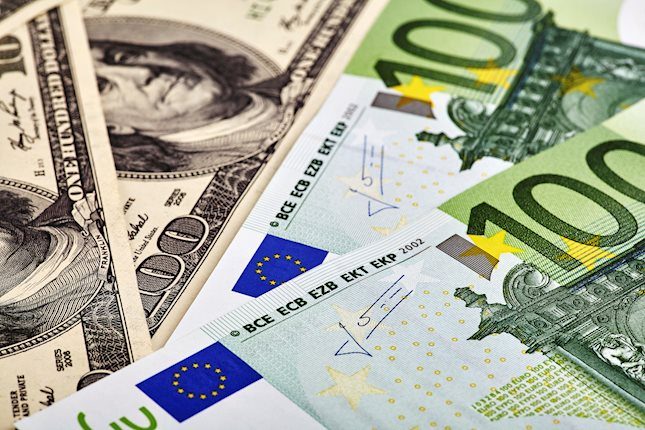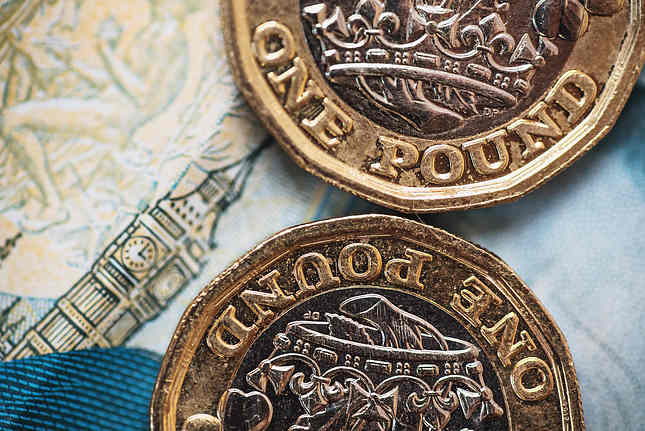- AUD/USD attracts buyers for the second straight day and draws support from a combination of factors.
- A positive risk tone and hawkish RBA expectations underpin the Aussie amid a modest USD downtick.
- Bets for smaller Fed rate cuts should limit the USD losses and cap any meaningful gains for the major.
The AUD/USD pair builds on the previous day's bounce from the vicinity of mid-0.6600s, or over a one-month low and gains positive traction for the second straight day on Friday. The momentum lifts spot prices back above the 0.6700 mark during the first half of the European session and is sponsored by a combination of factors.
The Australian Dollar (AUD) continues to draw support from Thursday's upbeat domestic employment details, which dashed hopes for an interest rate cut by the Reserve Bank of Australia (RBA) this year. Furthermore, the underlying bullish tone across the global equity markets prompts some profit-taking around the safe-haven US Dollar (USD), especially after the recent rally to the highest level since early August, and further benefits the risk-sensitive Aussie.
Meanwhile, data released earlier today showed that China's economy expanded 4.6% year-on-year in the July-September period, marking the lowest reading in 18 months. The reading was below the government's full-year target of 5%, offsetting the better-than-expected Retail Sales and Industrial Production figures for September. This, in turn, might hold back traders from placing aggressive bullish bets around the China-proxy Aussie and cap the AUD/USD pair.
Furthermore, bets for a regular 25 basis points (bps) interest rate cut by the Federal Reserve (Fed) in November, bolstered by Thursday's upbeat US macro data, should help limit any meaningful downside for the USD. This further makes it prudent to wait for strong follow-through buying beyond the 50-day Simple Moving Average (SMA) support breakpoint, around the 0.6750 area, before confirming that the AUD/USD pair has formed a near-term bottom.
Investors now look forward to the US economic docket, featuring the release of Building Permits and Housing Starts. Apart from this, Fed Governor Christopher Waller's speech, along with the broader risk sentiment, will drive the USD demand and provide some impetus to the AUD/USD pair. Nevertheless, spot prices remain on track to register losses for the third straight week and the fundamental backdrop warrants some caution before positioning for further gains.
Risk sentiment FAQs
In the world of financial jargon the two widely used terms “risk-on” and “risk off'' refer to the level of risk that investors are willing to stomach during the period referenced. In a “risk-on” market, investors are optimistic about the future and more willing to buy risky assets. In a “risk-off” market investors start to ‘play it safe’ because they are worried about the future, and therefore buy less risky assets that are more certain of bringing a return, even if it is relatively modest.
Typically, during periods of “risk-on”, stock markets will rise, most commodities – except Gold – will also gain in value, since they benefit from a positive growth outlook. The currencies of nations that are heavy commodity exporters strengthen because of increased demand, and Cryptocurrencies rise. In a “risk-off” market, Bonds go up – especially major government Bonds – Gold shines, and safe-haven currencies such as the Japanese Yen, Swiss Franc and US Dollar all benefit.
The Australian Dollar (AUD), the Canadian Dollar (CAD), the New Zealand Dollar (NZD) and minor FX like the Ruble (RUB) and the South African Rand (ZAR), all tend to rise in markets that are “risk-on”. This is because the economies of these currencies are heavily reliant on commodity exports for growth, and commodities tend to rise in price during risk-on periods. This is because investors foresee greater demand for raw materials in the future due to heightened economic activity.
The major currencies that tend to rise during periods of “risk-off” are the US Dollar (USD), the Japanese Yen (JPY) and the Swiss Franc (CHF). The US Dollar, because it is the world’s reserve currency, and because in times of crisis investors buy US government debt, which is seen as safe because the largest economy in the world is unlikely to default. The Yen, from increased demand for Japanese government bonds, because a high proportion are held by domestic investors who are unlikely to dump them – even in a crisis. The Swiss Franc, because strict Swiss banking laws offer investors enhanced capital protection.
Information on these pages contains forward-looking statements that involve risks and uncertainties. Markets and instruments profiled on this page are for informational purposes only and should not in any way come across as a recommendation to buy or sell in these assets. You should do your own thorough research before making any investment decisions. FXStreet does not in any way guarantee that this information is free from mistakes, errors, or material misstatements. It also does not guarantee that this information is of a timely nature. Investing in Open Markets involves a great deal of risk, including the loss of all or a portion of your investment, as well as emotional distress. All risks, losses and costs associated with investing, including total loss of principal, are your responsibility. The views and opinions expressed in this article are those of the authors and do not necessarily reflect the official policy or position of FXStreet nor its advertisers. The author will not be held responsible for information that is found at the end of links posted on this page.
If not otherwise explicitly mentioned in the body of the article, at the time of writing, the author has no position in any stock mentioned in this article and no business relationship with any company mentioned. The author has not received compensation for writing this article, other than from FXStreet.
FXStreet and the author do not provide personalized recommendations. The author makes no representations as to the accuracy, completeness, or suitability of this information. FXStreet and the author will not be liable for any errors, omissions or any losses, injuries or damages arising from this information and its display or use. Errors and omissions excepted.
The author and FXStreet are not registered investment advisors and nothing in this article is intended to be investment advice.
Recommended content
Editors’ Picks

EUR/USD clings to recovery gains near 1.0850 ahead of Fedspeak
EUR/USD trades in positive territory near 1.0850 on Friday following a four-day slide. China's stimulus optimism and a broad US Dollar correction help the pair retrace the dovish ECB decision-induced decline. All eyes remain on the Fedspeak.

GBP/USD pares UK data-led gains at around 1.3050
GBP/USD is trading at around 1.3050 in the second half of the day on Friday, supported by upbeat UK Retail Sales data and a pullback seen in the US Dollar. Later in the day, comments from Federal Reserve officials will be scrutinized by market participants.

Gold at new record peaks above $2,700 on increased prospects of global easing
Gold (XAU/USD) establishes a foothold above the $2,700 psychological level on Friday after piercing through above this level on the previous day, setting yet another fresh all-time high. Growing prospects of a globally low interest rate environment boost the yellow metal.

Crypto ETF adoption should pick up pace despite slow start, analysts say
Big institutional investors are still wary of allocating funds in Bitcoin spot ETFs, delaying adoption by traditional investors. Demand is expected to increase in the mid-term once institutions open the gates to the crypto asset class.

Canada debates whether to supersize rate cuts
A fourth consecutive Bank of Canada rate cut is expected, but the market senses it will accelerate the move towards neutral policy rates with a 50bp step change. Inflation is finally below target and unemployment is trending higher, but the economy is still growing.

Best Forex Brokers with Low Spreads
VERIFIED Low spreads are crucial for reducing trading costs. Explore top Forex brokers offering competitive spreads and high leverage. Compare options for EUR/USD, GBP/USD, USD/JPY, and Gold.